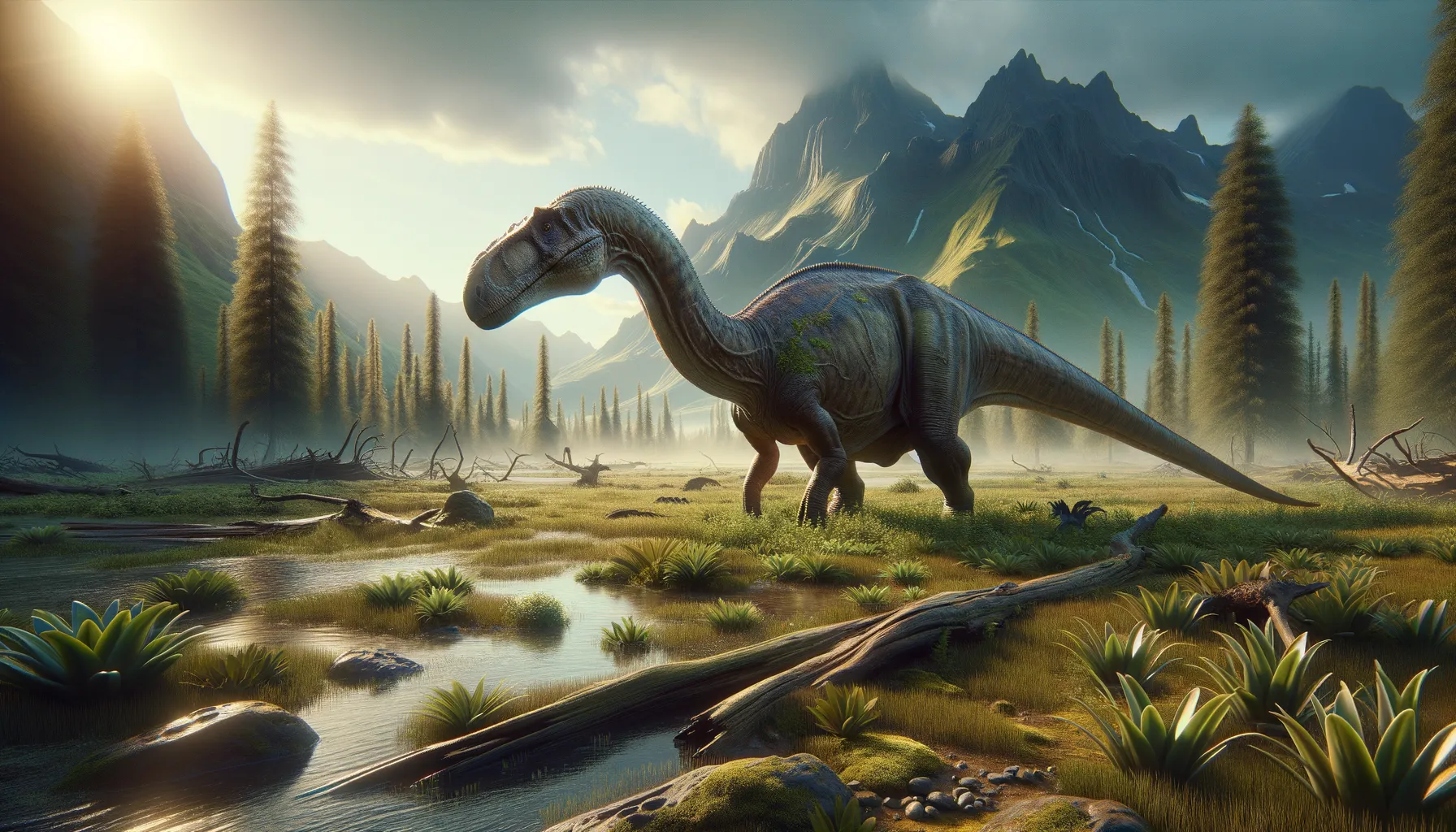
Gryposaurus
Nose arching through Cretaceous fields.
Period
Cretaceous
Length
Can grow up to 9 meters or 30 feet long.
Height
Approximately 3 meters tall at the hips.
Weight
Up to 5,000 kg or around 11,000 pounds.
Gryposaurus, known for its distinctive arch-nosed feature, was a hadrosaurid or 'duck-billed' dinosaur. It roamed the Earth during the Late Cretaceous period, grazing on vegetation. This dinosaur primarily inhabited the lush floodplains of what is now North America. Its skeletal discoveries provide insights into the diversity of dinosaur species and the ecosystems they thrived in about 75-80 million years ago.
Diet
Gryposaurus was herbivorous, primarily feeding on plants. Its flat teeth and large beak were well-suited to grinding tough vegetation such as leaves, twigs, and other plant material.
Hunting
As a herbivore, Gryposaurus did not hunt but foraged for food. It likely moved in herds for protection while searching for plant material to feed on.
Environmental challenges
Gryposaurus faced seasonal changes, mainly dealing with different weather and food availability. It needed to adapt to wet and dry periods, relying on abundant vegetation in the floodplains. Predation by theropod dinosaurs posed a constant threat, requiring the Gryposaurus to stay vigilant and possibly rely on group dynamics for safety.
Speed
Moderate, using powerful hind legs for movement.
Lifespan
Estimated to be around 70-100 years.
First discovery
First discovered in Alberta, Canada in 1913.
Fun Facts
- Gryposaurus is known for its distinctive 'hooked-nose' appearance, which has drawn comparisons to a 'Roman nose'.
- These dinosaurs lived about 75 million years ago during the Late Cretaceous period.
- Gryposaurus was a herbivore, meaning it primarily fed on plants with its hundreds of teeth perfect for grinding leaves.
- The name 'Gryposaurus' means 'hooked lizard', referencing its unique nose shape.
- They could grow up to 30 feet long, roughly the size of a school bus!
- Gryposaurus roamed what is now North America, with fossils found in places like Montana and Alberta.
- They likely moved in herds, which would have been a spectacular sight with their large numbers and sizes.
Growth and Development
The growth of Gryposaurus would have been relatively slow, needing years to reach full size. Juvenile Gryposaurus likely stayed near adults for protection, benefiting from learning herd behavior. Their development involved shedding teeth and constantly growing new ones for their plant-based diet.
Habitat
Gryposaurus lived in varied environments, from floodplains to subtropical regions. Its habitat supported lush vegetation, providing ample food sources. Seasonal climate changes would have influenced its movement patterns and availability of resources.
Interaction with other species
Gryposaurus likely shared its habitat with other herbivorous dinosaurs, resulting in competition for food resources. Its presence attracted predators like tyrannosaurs, leading to defensive behaviors. Symbiotic relationships with other species might have included cohabitation or shared foraging areas.
Natural lifespan
Gryposaurus had a natural lifespan that could extend to around 70-100 years.
Reproduction
Gryposaurus likely laid eggs in nests, possibly in communal nesting grounds. Its reproductive strategy might have involved some parental care post-hatching, typical among many herbivorous dinosaurs. The species likely produced multiple offspring per clutch, ensuring the survival of their lineage.
Social behaviour
Gryposaurus is thought to have been social, moving in herds for protection. Its social behaviors helped in foraging and avoiding predators. Herd movement would also have facilitated communication and social interactions among individuals.
Fossil locations
Fossils of Gryposaurus have been found in North America, particularly in Canada and the United States. Alberta, Canada, and parts of Montana in the U.S. are notable locations. These findings help map its geographical spread and understand its living conditions.
